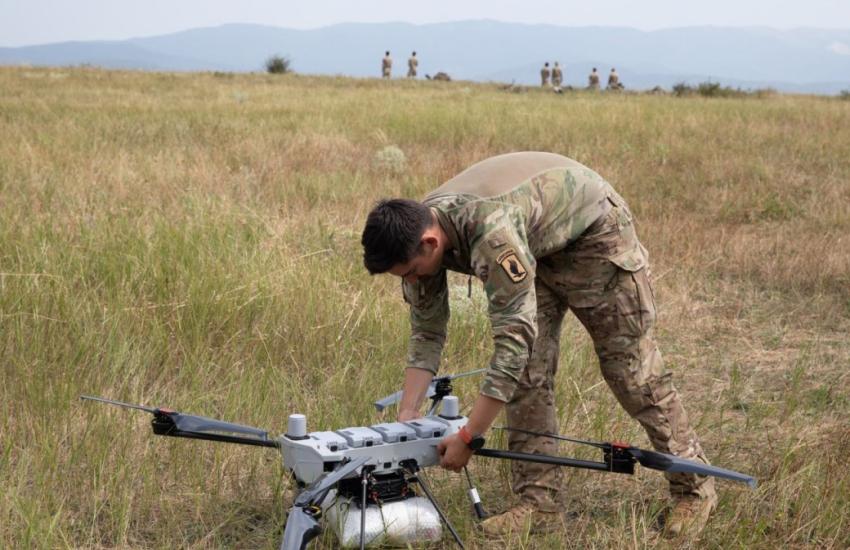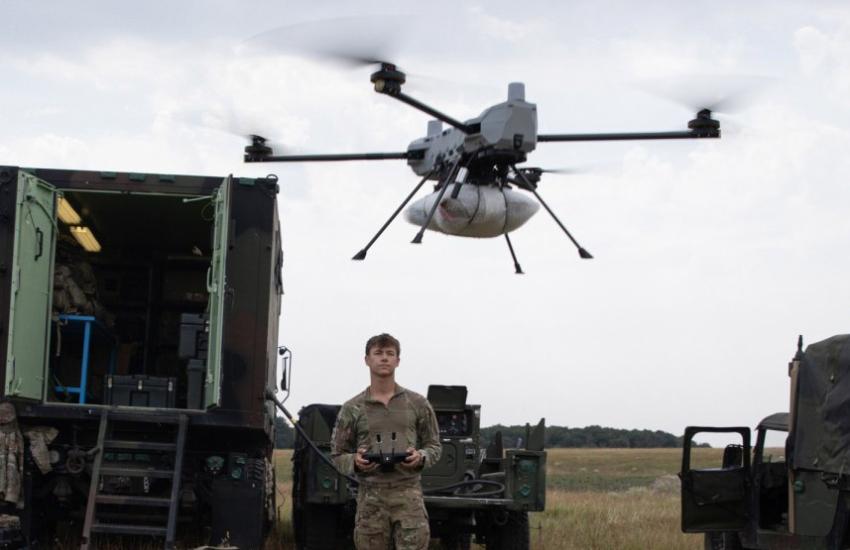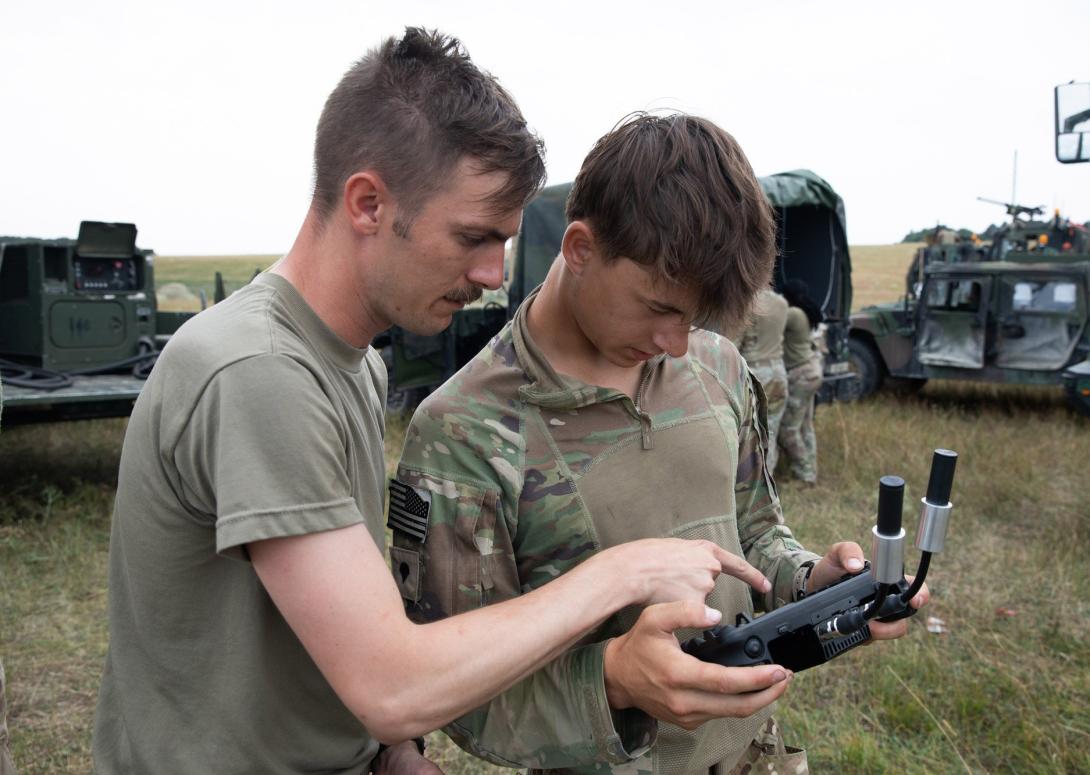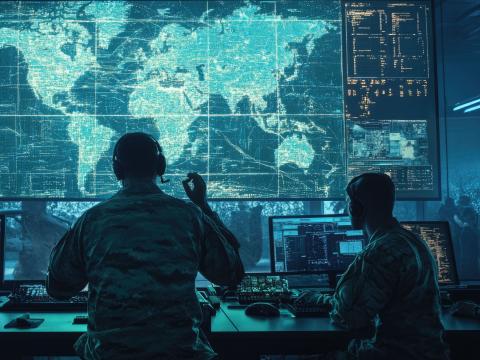Army Team Facilitating the Evolution of Small Unmanned Aircraft Systems
As unmanned systems become increasingly crucial to winning the fight on today’s battlefield, one U.S. Army group is working to ensure that these capabilities achieve their maximum potential. Branch leaders are looking to accomplish this goal by enhancing technologies for small unmanned aircraft systems (sUAS). More specifically, Hawkeye Platoon officials are developing and testing several performance-optimizing accessories to attach to drones.
Firstly, crews are constructing, programming and experimenting with an equipment-dropping feature. Warfighters can use this tool, which officials are developing with 3D-printing technology, to send help to soldiers on the battlefield without risking additional lives. The attachment can deliver supplies directly to warfighters and shape the battlefield, according to Staff Sgt. Jonathon Melvin, sUAS master trainer and UAS instructor/operator, Hawkeye Platoon, 1st Squadron, 91st Cavalry Regiment, 173rd Airborne Brigade. This equipment-dropping feature signifies an overarching theme within the Hawkeye Platoon ranks, as it exemplifies the desire to create the most effective systems possible.
“We also look at the possibility that we can find ways to improve ourselves through our own innovations,” Melvin said during an interview with SIGNAL Media. “[Is there] anything we see that can affect the mission? Is there something that we could 3D print and innovate that would help assist? We’re developing equipment droppers for some of the drones where we could drop supplies or even other effects [to the battlefield].”
The Hawkeye Platoon has access to an equipment-dropping system that can carry up to 10 pounds of supplies, and officials are already looking toward stronger, more sturdy systems. The 173rd Brigade Support Battalion, a group within the 173rd Airborne Brigade, possesses an equipment-dropping system aimed at carrying loads greater than 10 pounds; however, Hawkeye Platoon personnel do not have access to those systems yet, according to Melvin.
As of now, this accessory is not fully ready for fielding. Hawkeye Platoon personnel must thoroughly test out the feature before commanders can start using it in the battle, according to Melvin.
Hawkeye Platoon also developed an sUAS that contained a 3D-printed bombing attachment, according to Melvin. The tool is compatible with several types of drones that commanders can trigger to drop a variety of bombing equipment, including fragmentary grenades and smoke grenades, reported 1st Lt. Rhett Perry, sUAS platoon leader.
Hawkeye Platoon members are sometimes the first people to use these practically, and team personnel spot areas where developers should make adjustments. Hawkeye Platoon works closely with industry, allowing seamless communication between the parties for improving the device.
Hawkeye Platoon officials are calling on sUAS users to submit suggestions as to how they would like to see the systems become even more advanced.
“There’s been a lot of reception for it,” Melvin said. “When we showed other units the capabilities that can be done at the user level, it has been met with a lot of interest, and with follow-on requests of us doing more training where they could just have us be their intelligence, surveillance and reconnaissance capability [even] though their unit might not be receptive to having sUAS operators at the moment. So, every day we are trying to get feedback [so] we can learn more.”
The desire to further improve and add additional capabilities to sUAS comes as Hawkeye Platoon team members emphasize the importance of integrating sUAS into Army operations. sUAS are small drones that commanders and soldiers can use to gain several advantages over the adversary while keeping their personnel and capabilities out of harm’s way. Firstly, command and control officials can ideally use sUAS, which sometimes contain camera and video attachments, to capture real-time images and fully grasp the landscape of the battlefield.


Possessing this capability allows commanders to access pivotal details in an immediate and safe manner, enabling them to make critical decisions in real time. sUAS also offer other benefits, such as determined surveillance and the resilient ability to survive, along with stealth capabilities, 1st Lt. Nicholas McDonald, platoon leader for the Dragonflies sUAS fleet, said in a press release. Additionally, these systems are more convenient for commanders to use than the standard UAS and drone devices, Melvin explained.
“One of the better things with having an sUAS as a unit is instead of being able to [use] the traditional-style drones, though they may have a longer use time, your unit is able to field a lot more of these for a lot cheaper,” Melvin said. “And being able to not have to solely rely on an asset that can probably only be called up during certain windows, certain mission requirements and whatnot. It allows the units that we have done training with to be able to flex with the way actions are provided.”
“It also reduces their signature footprint by not having to set up as a mass unit or anything,” Melvin added. “They can just be out in smaller functions.”
Commanders are integrating these sUAS into their real-life operations, and they are still researching, testing and training with the innovation. Certain Army members use sUAS currently, but solely in field exercise settings; however, this is only because leaders have not deployed the unit since they obtained access to sUAS, according to Melvin.
The Hawkeye Platoon has been around for about 10 years, but nearly two years ago, group leaders changed its structure. Initially, the team was a UAS platoon created to focus on the RQ-7B Shadow device; however, Army leaders decommissioned the system in March 2025, according to Melvin. At this time, Hawkeye Platoon leaders identified the sUAS environment as a place that they could step into and assist.
“Once the shadow went away, we found ourselves with a need to fulfill, which was now the sUAS due to the changing environment through using sUAS at the tactical lower level,” Melvin said. “So, it was no longer a brigade. We found a way to incorporate it at the troop and platoon level. By doing that, we took our expertise of using UAS, shifted it over to sUAS and we train ourselves up on those systems. And then [we] found a way to be able to better advertise the use of the systems and then to train the troop and platoon level with their own operators, so they can answer the commander’s intent a lot faster than how it would have been done traditionally.”





Comments